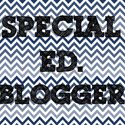Ending Sound Fun
February 12, 2012
I have a couple of students that have become accustomed to listening for beginning sounds and leave off the ending one. It’s like they don’t hear it. I have created a sort and game that will help these guys listen of the last sound they hear. It doesn’t matter if the word ends in a /e/ because they won’t hear it. When I do word study with students who don’t have the decoding skills to read the word, I use pictures for concept, word sorts, or games. Some think that phonemic awareness instruction can be strictly oral but I have found that the students that need more than the average practice to master the skill pictures help all students. Fountas and Pinnell have several activities geared toward sound isolation in their Phonics Lessons: Letters, Words, and How they Work (grades K and 1).
My building doesn’t use their phonics materials as the core phonics program. In the past three year we’ve gone from Fundations from Barbara Wilson to Mondo Phonics. Mondo is our core guided reading program. Pick one and use it every day until students demonstrate mastery.
Helpful Websites:
My building doesn’t use their phonics materials as the core phonics program. In the past three year we’ve gone from Fundations from Barbara Wilson to Mondo Phonics. Mondo is our core guided reading program. Pick one and use it every day until students demonstrate mastery.
ReadWriteThink offers a lesson to teach phonemic awareness. The lesson uses chants and matching activities to help students recognize words with the same sound.
This lesson may be too easy for second grade, but it reinforces words that have the same sound.
This website offers many lessons for a SmartBoard. About halfway down the page, there is a lesson for beginning and ending sounds.
Supporting Picture Books:
Kellogg, S. (1992). Aster Aardvark’s alphabet adventures. New York, NY: HarperCollins.
This picture book is a good book to read-aloud. It features sound substitutions at the beginning of words.
Slepian, J. (2001). The hungry thing. New York, NY: Scholastic, Inc.
This book also features sound substitutions at the beginning of words. It helps students focus on the beginning sounds.
Gowler, R. (2001). Barnyard song. Hartford, CT: Atheneum.
If you want to focus on ending sounds, this book can help. Using it at as a read-aloud will allow you to find words that end the same.
Ahlberg, A. (1999). Monkey do. London: Walker Books Ltd.
This book also features words that end the same.
Subscribe to:
Post Comments
(Atom)

About Me
Welcome to my all thing special education blog. I empower busy elementary special education teachers to use best practice strategies to achieve a data and evidence driven classroom community by sharing easy to use, engaging, unique approaches to small group reading and math. Thanks for Hopping By.
Resource Library
Thank you! You have successfully subscribed to our newsletter.
Search This Blog
Labels
21st Century
Autism
Bloom's Taxonomy
DIBELS
ELL strategies
Formative Assessment
Fountas and Pinnell
Guided Reading
IEP
Just Words
Progress monitoring
RTI
Reading Comprehension
Wilson Reading System
apps
back to school
beginning readers
best practices
books to read
classroom
common core
comprehension
data
differentiation
fluency
freebie
intervention
lesson plan
math
parents
phonics
reading
small group
special education
teaching
technology
vocabulary
writing











Hello,
ReplyDeleteMy name is Heather and I work for Worth Ave. Group. We’re currently holding a contest for K-12 teachers. Over $150,000 in grant money and prizes will be given away in the Technology in Education Grant. Get the teachers you know involved in this great giveaway by voting for them and you'll give them a chance to win an iPad 2, 30 iPod touches for their classroom and a $25,000 technology grant for their school. Voting has just begun and end will end March 31st. Visit www.voteforteachers.com today or call 1-855-834-7660 for more information.
voteforteachers@worthavegroup.com